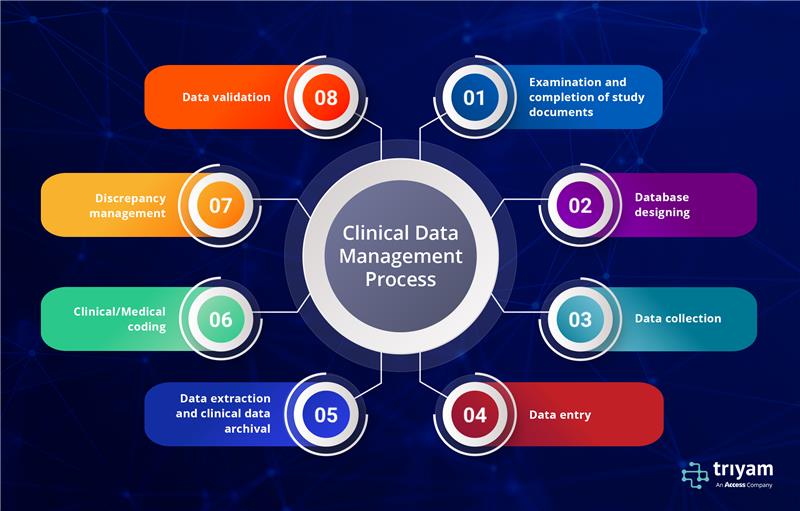
The Clinical Trials Regulations, specifically Regulation 31A of the Medicines for Human Use (Clinical Trials) Amendment Regulations 2006, define requirements for archiving clinical trials of investigational medicinal products (CTIMPs). All important documentation should be archived, including from investigators, sponsors, and others involved in the conduct of clinical trials (including service departments such as pharmacies, laboratories, and radiology). Contains important documents for an appropriate duration/schedule for retention and destruction and archiving of essential documents.
Clinical data archiving helps healthcare organizations improve patient care and optimize business operations by moving data from legacy EHRs to a consolidated repository. It is mandatory to retain all records and data collected in clinical trials. In addition, all data collected must be archived for at least three years, or until the investigation is completed(whichever is longer). All sponsors conducting clinical trials are guided by a set of policies and procedures that should be reviewed during and after the trial, as they may serve as the primary source of information for future research.
Today’s clinical data often reside in disconnected and inaccessible repositories, making it difficult to link, analyze and interpret this data at the individual or population level. This results in a proliferation of potentially interoperable electronic and personal health records, integrated with laboratory values, diagnostic images, patient demographics, and preferences. The development of approaches to link and connect this data serves to transform, create and leverage rich data resources to support healthcare and improve people’s health.
Who is a Clinician?
A clinician is a doctor having direct contact with patients, rather than one involved with theoretical or laboratory studies. Clinicians can access archived patient data directly from the EHR at the point of care, intuitively organize patient data for easy search and retrieval, and share archived documents with all clinicians across the organization. Share safely.
What is Clinical Data?
Clinical data is information gathered for the broad purpose of clinical research on the micro-level (patient care) to the macro-level (broad applications within a health system). The sources of clinical data include electronic health records, administrative data claims data, disease registries, health surveys, and clinical trial data.
Clinical vs Non-Clinical Data
Clinical data is a collection of data related to patient diagnoses, demographics, exposures, laboratory tests, and family relationships. Clinical profiles include data on demographics, diagnoses, disease comorbidities, symptoms, medications, procedures, and laboratory measures.
Non-Clinical Data means all data and results (other than Clinical Data) for a product including biological, chemical, pharmacological, pharmacokinetic, pharmaceutical, physical and analytical, pre-clinical, safety, and manufacturing.
How Long Do You Have to Store Clinical Data?
Any research that collects identifiable health data must adhere to HIPAA guidelines. Therefore, records are required to be maintained for no less than 6 years following the subject’s signing of an authorization.

What is Clinical Data Management?
Clinical data management (CDM) is the process of collecting and managing research data in accordance with regulatory standards to obtain complete, error-free, and quality information. The goal is to collect as much data as possible for analysis in compliance with federal, state, and local regulations.
The field of clinical data management (CDM) has emerged from demands from both the pharmaceutical industry and regulatory authorities. As drug development has accelerated, regulatory authorities have responded by requiring adherence to quality assurance standards in the collection of data used in the drug evaluation process.
To maintain data integrity, the CDM process begins at the start of the clinical trial, before the study protocol is completed. The CDM team designs the Case Report Form (CRF) and defines the data fields to be used. The CRF specifies the types of data to be collected, the units of measurement to be used, and CRF completion guidelines (that is, instructions for completing the data). Variables are annotated with coded terms.
A Data Management Plan (DMP) is then developed as a guide, containing a description of the researcher’s CDM activities. A database is created to support his CDM tasks with the appropriate compliance tools. Testing is performed prior to using the plan using actual clinical trial data. Subsequent steps in this process are CFR tracking, data entry, validation, discrepancy management, medical coding, and database locking. Case report forms can be used to collect data on paper or electronically. However, with further developments in technology, the trend toward electronic data collection continues. Additionally, remote data entry (e-CRF) has been adopted by many pharmaceutical companies as a time-saving means.
Is Clinical Data Archiving Right for You?
Has your organization followed superior digital scientific statistics (EMRs) or digital fitness statistics (EHRs) structures, yet your teams continue to use outdated legacy systems? Does this make it tougher for clinicians to get admission to quality clinical/ patient data? Do legacy structures, nevertheless, constitute a full-size part of your IT budget, stopping you from implementing different strategic initiatives?
Clinical Data Archiving is the migration of patient data from outdated legacy systems to a single archiving platform that maintains long-term patient records, enables healthcare organizations to comply with regulatory requirements, and allows you to retire legacy clinical applications to reduce costs and maintenance. While Clinical Data Archiving is designed to reduce the cost of safeguarding and preserving data, our clients also benefit from improved patient outcomes, by giving clinicians live access to archived records and giving Healthcare Information Managers tools to easily manage archived data.
Benefits Of Clinical Data Archiving
- Clinical Data Archiving provides a more complete view of patients through easy access to data on legacy applications while reducing the cost of maintenance for older systems and ensuring ongoing compliance with HIPAA, PHI, and other regulatory requirements.
- It provides bigger clinical potency and coordination across the timeline of care through access to information anytime, anywhere.
- It provides on-demand access to all archived patient records, documents, and images through one system.
- It gives clinicians a complete view of patient history, diagnoses, and treatments, when and where they are most needed, at the point of care.
- System performance also is achieved through periodic archiving of inactive data, to reduce the load placed on current production systems.
